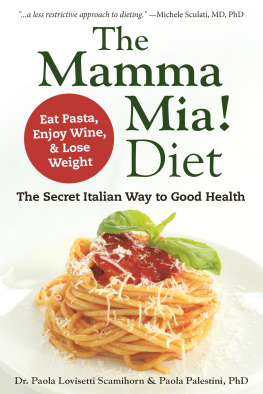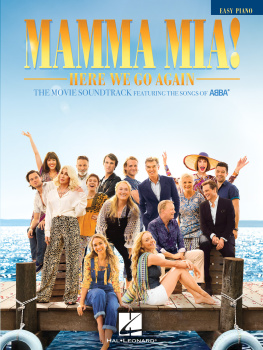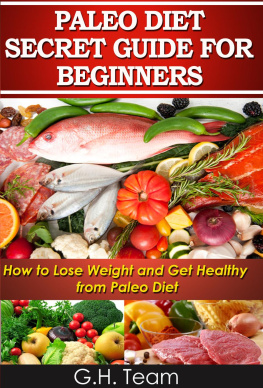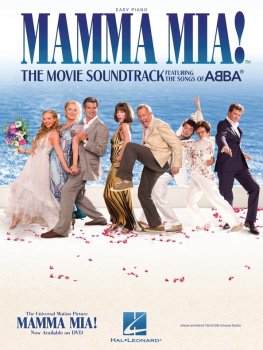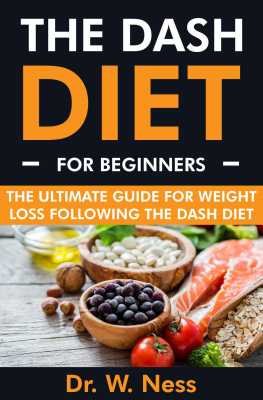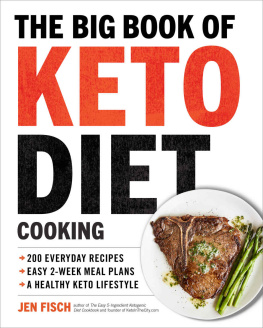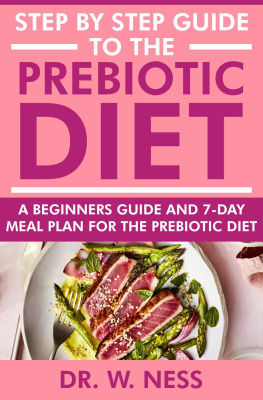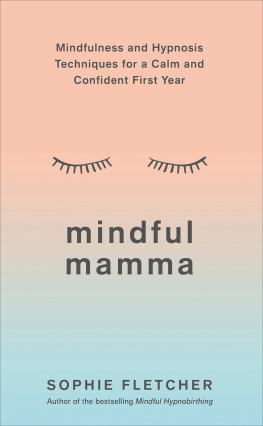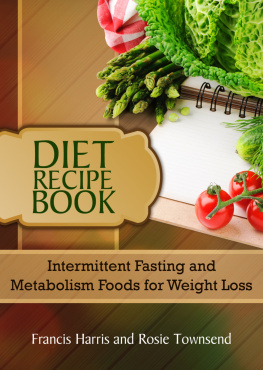Hatherleigh Press is committed to preserving and protecting the natural resources of the earth. Environmentally responsible and sustainablepractices are embraced within the company's mission statement.
Visit us at www.hatherleighpress.com and register online for free offers, discounts, special events, and more.
The Mamma Mia! Diet
Text copyright 2018 Paola Lovisetti Scamihorn and Paola Palestini
Library of Congress Cataloging-in-Publication Data
is available upon request.
ISBN: 978-1-578-267-323
All rights reserved. No part of this book may be reproduced, stored in a retrieval system, or transmitted, in any form or by any means, electronic or otherwise, without written permission from the publisher.
Cover and Interior Design by Carolyn Kasper
Printed in the United States
10 9 8 7 6 5 4 3 2 1
CONTENTS
Part I:
The Principles of the
Mamma Mia! Diet
Part II:
Top Tips for Success
Part III:
Recipes and Seasonal
Menus
Preface
T wo Paolas. But its not just our names that we have in common; we also share a background, training, and true passion and love for a healthy lifestyle based on simple, frugal food such as fruits, vegetables, legumes, pelagic fish, small amount of meat (especially poultry or rabbit), eggs, and olive oil, all accompanied with semi-sweet desserts. In a few wordsthe Mamma Mia Diet (MMD). Now, wed like to take this opportunity to say a few words on why we wrote this book.
The expression Mamma mia! immediately brings to mind Italythe country where you eat good food, drink tasty wine, and stay healthy and in shape. In other words, the Italian lifestyle!
This is not a diet book in the traditional sense. It should instead be considered a useful manual about the Mediterranean diet, a how-to for the Italian style of healthy eating and living, which provides you with all sorts of physical and mental benefits. This is a book you can easily take along with you wherever you go, or use in your own kitchen to prepare nutritious and tasty dishes for yourself and your family.
When Paola Palestini and I created this book, we relied not only on years of personal experience in the field of nutrition, chemistry, and healthy cooking, but also our passion to encourage people to learn how to enjoy the best of Italian life, make positive lifestyle choices, feel better, and live longer. It is our hope that, by learning to establish a positive relationship with wholesome food, youll be happierand even lose some extra pounds or maintain normal weight . Let good food be your medicine; learn to recognize and love it, and it will love you back!
Good food has always been part of my life. I grew up in a very traditional Italian family where fresh, seasonal, and homemade foods were always part of our diet. Cooking has always been one of my passions, even if I chose to become a pharmacist and medical researcher. (Though, since cooking and nutrition are both based on chemistry, my professional expertise has actually helped me better understand how to cook and eat healthily!)
When I was a little girl, I spent a lot of time in the kitchen cooking with my mother (making a big mess!) and learning delicious, traditional recipes using authentic, fresh ingredients and preparing everything from scratch. I still remember preparing lasagne or ravioli for Christmas, making crostata with seasonal fruits for our Sunday lunch, and savoring the smell of homemade fresh bread; the scent was like perfume. This is the way we Italians learn to cook, generation to generation, through daily practice. And in the Italian tradition, I continue this with my kids today.
My dearest wish is that this book should invite you, my readers, not just to experience the taste of Italian cooking in a restaurant somewhere in Italy or abroad in your own country, but to cook , and to take on an active role by re-proposing the essence of doing , the capability of cooking to create a home and the need to return to the times and methods of a more relaxed way of life. To dedicate ones efforts to the care of oneself, family, and othersthe healthy Italian lifestyle.
Paola Lovisetti Scamihorn
Having been born in Genoa, Cristoforo Colombos seaside hometown, I have always been interested in understanding how things workedespecially how life works. I grew fond of biology and in particular, the molecular mechanism that makes life possible.
And what is the most complex living organism on earth today? Surely, the human being. This is the reason why I have felt drawn to study biochemistry, the science which studies the chemistry of life, a bridge between biology and chemistry to explain the complex chemical reactions that give birth to life. It is the purview of biochemistry to analyze the structure and transformations of cell components such as proteins, carbohydrates, lipids, nucleic acids, and biomolecules, all while trying to determine how different macronutrients are processed by the body to yield energy.
I am currently a biochemistry professor, and for many years I have been teaching my medical students that each pathology is caused by a biochemical modification of cellular signaling, and that through nutrition, we can introduce a relevant number of molecules and/or macronutrients that can activate positive or negative mechanisms by interacting with our body.
Nutrition is a condition of balance. All the nutrients (both macro and micro) in our food must be introduced in the right amount so that they can act synergistically and have a healthy effect on our body/health. We must not demonize certain nutrients, like carbohydrates or sugars; all of them, in the right amounts, play an important role in our body.
Throughout the history of humanity, it is the right combinations of foods that have made the evolution of humans (and, consequently, of civilization) possible.
What I have tried to do in this book, both by relying on my biochemical knowledge and by compiling other researchers scientific data and large scale epidemiological investigations, is to explain why a certain molecule has a positive effect, whereas another one, which only differs in small chemical characteristics, can have negative effects.
My hope is that by doing so, I can help bring readers into closer alignment with the ideal balance of nutrients that has helped humanity grow and flourish throughout the centuries.
Paola Palestini
Introduction:
Why the Mamma Mia! Diet is Superior to Other Diets
N owadays, we are exposed to any number of diets, each invented by a so-called nutrition guru, each promising easy weight loss in no time at all. Just a few simple changes, they claim, will get us into perfect shape, toned and in good health. The one thing these diets have in common (besides unsustainable results) is that they are monotonous, unrewarding, and even unhealthy, due to being incomplete or difficult to follow. Thats why its always smarter and better in the long run to adopt a healthy lifestyle rather than some crash-course diet. Simple, sustainable changes to ones dietchanges that are relatively easy to follow, beneficial, and can be easily implemented into your way of lifeare the key to improved health and well-being.
But what changes should you be making?
Studies have consistently shown that Italians are some of the longest-living people in the world. Just this year, in the northern area of Piedmont, the oldest living person in the world and the last survivor of the 19 th century passed away at the age of 117. And she is no fluke; her sisters lived to be 100 and 102 themselves! In southern Italy, there are several villages that are called villages of eternal youth because of the high numbers of active 100+ year-olds.

